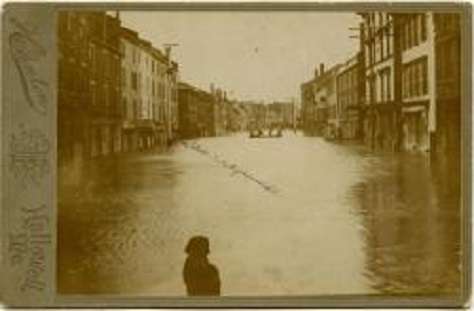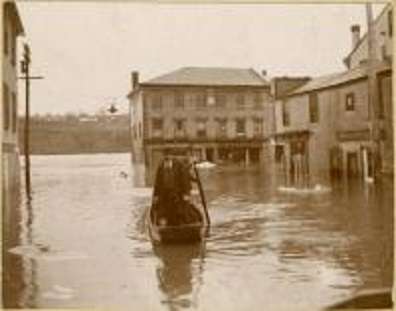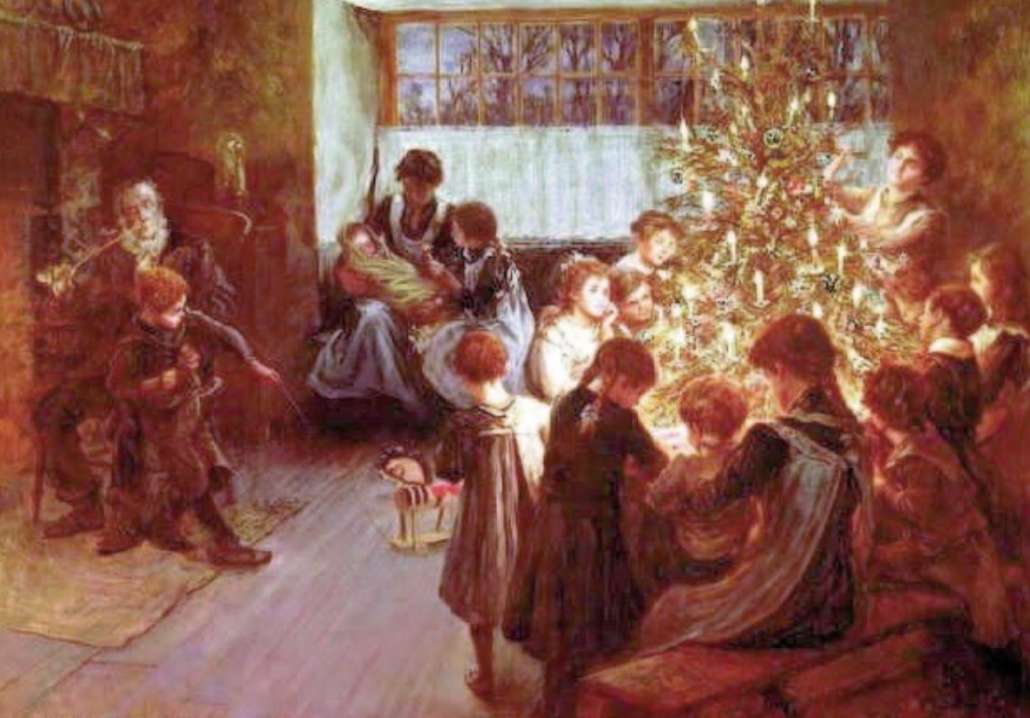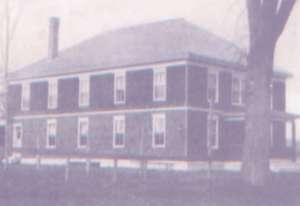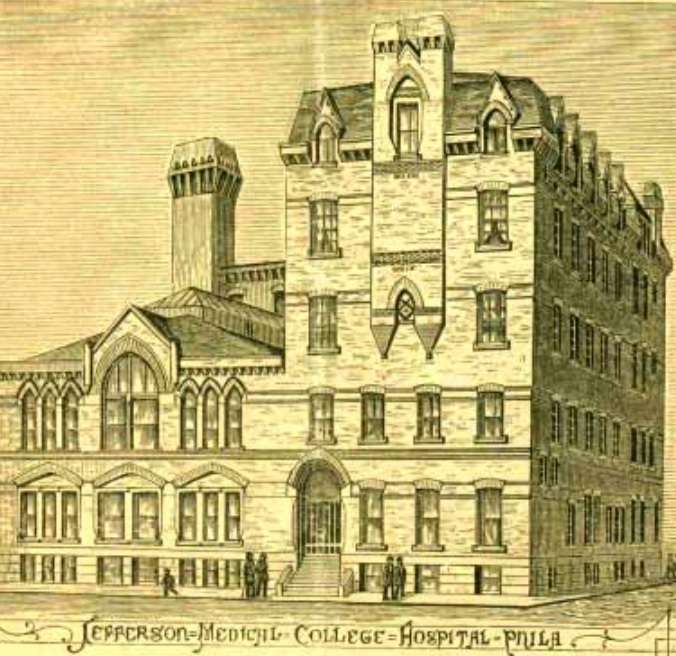Up and down the Kennebec Valley: Weather events
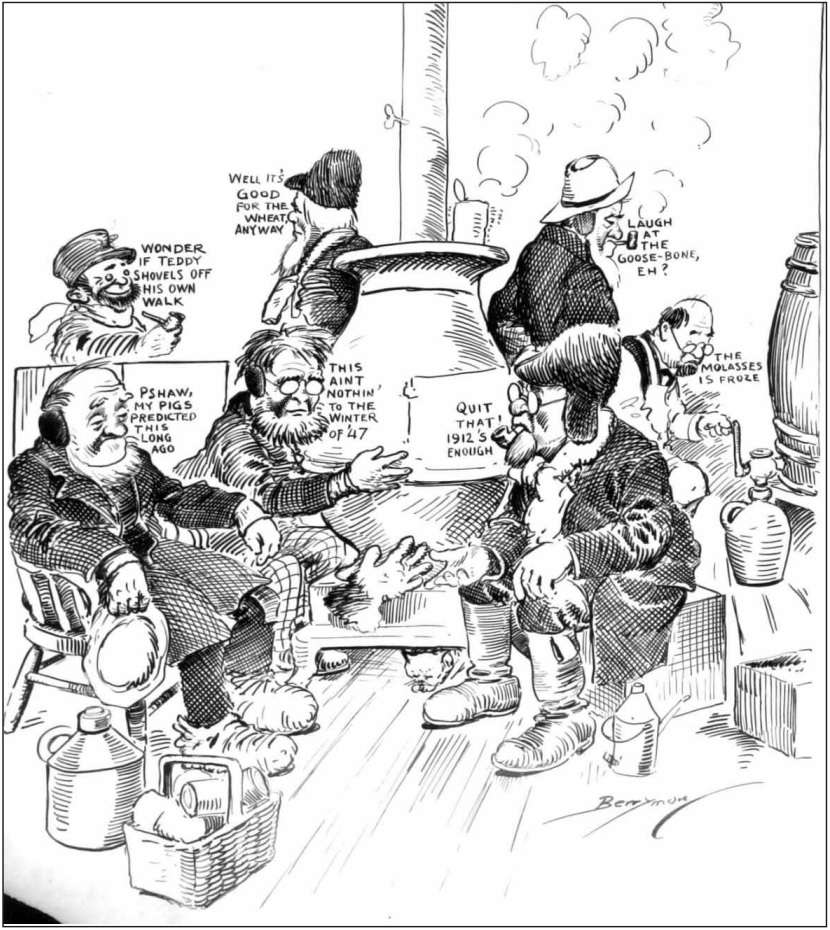 by Mary Grow
by Mary Grow
James North and Ruby Crosby Wiggin, quoted last week, were not the only local historians to mention the Year without a Summer. And 1816 was not the only unusually cold spell – though it was the longest spell of (fairly) consistently cold weather – recorded in the central Kennebec Valley since the settlers’ arrival.
The 1995 history of Maine, edited by Richard W. Judd, Edwin A. Churchill and Joel W. Eastman, reminds us that 1816 was also known as “Eighteen-hundred-and-froze-to-death.” The authors of the chapter on agriculture (James B. Vickery, Judd, and Sheila McDonald) offered it as an example of what they called Maine’s “fickle” climate.
Part of Alma Pierce Robbins’ history of Vassalboro is a summary of major events by year. 1816 she distinguished as “the year of ‘NO SUMMER,'” when “people planted their gardens with their mittens on!” July was the only month in 1816 when it did not snow in Vassalboro, she wrote.
Her account is contradicted by the authors of the Fairfield bicentennial history. Their chapter titled “Disasters” begins with “the year of no summer.” Spring was late, they wrote, with frost in May; but crops were doing well enough until central Maine got six inches of snow on June 6.
“The same thing happened on July 9 and again on August 21,” they wrote. Like other historians, including those cited last week, they wrote that the weather was one reason Maine people moved west.
They added, “The Ohio Hill road is said to be so named because of the many that left from here.” (Fairfield’s Ohio Hill Road is the section of Route 23 that runs from Route 201 a little south of the Goodwill-Hinckley School to Fairfield Center.)
* * * * * *
Other historians described, in more or less detail, other cold days and weeks before and after 1816.
Linwood Lowden quoted an early sample in his Windsor history, a March 17, 1762, letter from an Alna resident named Job Averill to a man in Massachusetts. (Alna is on the Sheepscot River, less than 20 miles downstream from Windsor.)
Averill described “a most terrible winter the snow has been for seven weeks past and is now near four feet deep and no business could be done and people are like to lose all their cattel….” Cattle were dying and people going hungry, he said.
North wrote in his Augusta history that 1780 was another cold winter, when Kennebec Valley residents were already stressed by the hardships of the Revolution. There was “uncommonly deep” snow that lasted into late April and the Kennebec River was frozen down to the coast.
The spring of 1785 saw the latest ice-out recorded up to the time North finished his work in 1870. He dated it by contemporary records of people crossing the river on the ice on April 22 and April 24, the ice moving on April 25 and ice-cakes from up-river still floating past Fort Western on May 1.
January 1807 saw another cold spell, according to North’s history. He quoted temperature readings for the end of the month: 22 degrees below zero on Jan. 20, minus 18 on Jan. 21, minus 24 on Jan 22, minus 32 on Jan. 23, a warming to minus 16 on Jan. 26 and a low of minus 34 on Jan. 27.
There was a major snowstorm in Augusta on May 6, 1812, with high wind. Snowfall was variously estimated at six to 18 inches. The Augusta Herald quoted a man said to be old enough to have “lived in three centuries” who “did not remember colder or more severe [May] weather.”
Windsor historian Lowden followed his report from 1762 with a quotation from the Thursday, Jan. 29, 1857, Kennebec Journal commenting on the extremely cold weather: “The night of Friday last [Jan. 23] was the coldest ever felt by any living inhabitant of Maine.” On Saturday at dawn, “the thermometer at the Insane Hospital registered 42 degrees below zero,” with readings elsewhere in Augusta from 37 to 40 below.
* * * * * *
Ruby Wiggin mentioned in her history of Albion multiple events related to weather and other natural phenomena – either she was unusually attentive to such events, or the small town was unlucky. For example, she wrote that there were few local records of the Year without a Summer, but people she spoke with in the 1960s remembered tales of the “grasshopper year” that she said was almost 50 years after 1816.
That year grasshoppers ate most of the farmers’ hay, as well as “other leafy crops.” Wiggin told two stories.
One Albion resident had no hay for his oxen. He kept them alive by feeding them hemlock branches and meal, buying the latter with money he earned making and selling ash baskets.
Another man found the grasshoppers had spared the hay on what Wiggin called Poplar Island on Bog Road. After ice-in, this farmer was able to cut two loads – for which someone offered him $100. He refused, because his own animals needed to eat.
(Contemporary Google maps show Bog Road crossing what appears to be a tributary of the Sebasticook River, with an island slightly downstream of the bridge – Poplar Island?)
Wiggin also noted the adventure of Lester Shorey, who lived on Drake Hill, in southeastern Albion. He attended a Grange meeting in 1901, probably on Dec. 7 (the Saturday on which that year’s anniversary meeting was held); and because the day’s hard rain had flooded out bridges over most of the streams between Center Albion and his house, it took him more than eight hours to find a road home, via Palermo.
Two historians noted a spectacular natural event in August 1787, although they disagreed on the exact date.
William D. Williamson, in his 1832 history of Maine, described an incident “too rare to be passed unnoticed.” On Aug. 26, 1787, around 4 p.m., “A ball of fire, apparently as large as that of a nine pounder” was seen in New Gloucester, Portland and elsewhere, “flying through the air in a south-western direction, at an angle of more than 45 [degrees] from the ground, when it suddenly exploded three times in quick succession, like the discharge of as many cannon, with reports resembling thunder-claps.”
There was no earthquake, Williamson wrote, but “buildings were shaken” and smoke seen. The noise was heard “as far east as Frenchman’s bay, and westward at Fryeburgh.”
North wrote that on Thursday, Aug. 30, 1787, around mid-afternoon, Colonel (Joseph, probably) North, Captain (Henry) Sewall and Ebenezer Farwell were exploring possible routes along which to lay out a road from Cobbosseecontee to Bowdoinham. Sewall recorded in his diary an aerial explosion that he compared to “a small cannon”; he and his companions “supposed it to be the bursting of a meteor.”
North pointed out that Sewall’s date differs from Williamson’s.
There was an earthquake in central Maine on Dec. 23, 1857, between 1 and 2 p.m., North wrote; it was felt in Lewiston, Augusta and Waterville, among other places. He wrote that in addition to the earth shaking, “The noise attending it, as heard by those in buildings at Augusta, was as of an immense weight in the air moving from the south and descending diagonally through the roof with a rolling and crashing sound….The noise passed off to the north with a prolonged rumbling.”
* * * * * *
Henry Sewall’s diary, for part of 1787 (mentioned above) and consecutively from 1830 to 1843, is one of three that Charles Nash quoted parts of in his history of Augusta, published in 1904. He also reprinted excerpts from Martha Ballard’s diary (1785-1812) and Daniel Cony’s diary (1808-1810).
(Your writer views with amazed admiration the historians who first turned such documents, hand-written and perhaps time-damaged, full of unexplained references, into sources of information for future generations.)
With varying frequency, all three diarists recorded weather and other natural phenomena, both routine and extraordinary. Examples follow.
Ballard sometimes ignored the weather for days on end; sometimes wrote briefly of blustery wind, snow or rain, cold or warmth, clouds or clear sky; occasionally mentioned a rainbow, or an odd color in the sky. On March 27, 1786, and again on May 1, she wrote that northern lights had appeared.
The summer of 1787 was apparently a chilly one. On Sunday, July 1, Ballard wrote “We had ice an intch [her spelling] thick in our yard south side of the house this morn.” On Aug. 4 (a Saturday) she recorded “A very severe shower of hail with thunder and litning [her spelling], began at half after one, –continued near one hour. I hear it broke 130 pains [her spelling] of glass in Fort Western.”
On March 22, 1792, Ballard wrote: “Cloudy, morn; clear the rest of the day. The sun eclipsed.” Later in the week, her husband and son were sugaring with a neighbor. The ice in the Kennebec was gone on April 3, and a friend sowed peas on May 5.
Daniel Cony was 56 and had lived in Augusta for 30 years when he wrote short diary entries in 1808, 1809 and 1810, Nash said. Often an entry was only a few words about the day’s weather.
For example, July 1808 was hot and wet; Cony recorded temperatures of 90 degrees or higher on July 1, 16, 17 and 23. August he summarized as “Dry, fine season to gather in the grain.”
Oct. 10, 1809, was another hot day, with the thermometer reaching 96 degrees in the shade. November Cony summarized as “extreme cold,” with the Kennebec frozen by Nov. 23; but between Dec. 5 and Dec. 16 mild weather with rain took out most of the ice.
According to Henry Sewall, late December of 1830 was similar to early December of 1809. The Kennebec had frozen over “passable for teams” by Nov. 22; but a “warm rain” on Christmas Day “broke up the ice.”
For Dec. 31, he wrote: “Warm and wet, which took off every vestige of snow, raised the river, expelled the ice, and took the frost out of the ground, so as to render the roads muddy and deep and the travelling bad.”
Sewall noted the May 1832 flood described in the Jan. 12 issue of The Town Line. In 1833 he commented on two phenomena: a meteor shower early the morning of Nov. 12, with “meteors flying in all directions over the horizon, which produced an effect like lightning”; and on Dec. 26 a total lunar eclipse.
There was a “considerable eclipse of the sun” on Nov. 30, 1834, but, Sewall wrote, it was “rendered invisible by the clouds.”
On Dec. 23 of that year, Sewall wrote: “Received a Fahrenheit Thermometer from Boston.” He used it to record the Christmas Day temperature, eight degrees below zero; but the next diary record is not until Sunday, Feb. 18, 1838, when the temperature rose from 15 below to 25 above.
The March 31, 1836, entry is an interestingly oblique reference to the coming of spring: “The stages continue to run eastward on runners, though they begin to use wheels westward.” The Kennebec opened April 12 and closed Dec. 1 that year.
Sewall noted his 91st birthday on Oct. 24, 1843, and apparently discontinued his diary at the end of the year. He died Sept. 5, 1845.
Main sources
Fairfield Historical Society Fairfield, Maine 1788-1988 (1988).
Judd, Richard W., Churchill, Edwin A. and Eastman, Joel W., edd., Maine The Pine Tree State from Prehistory to the Present (1995).
Lowden, Linwood H., good Land & fine Contrey but Poor roads a history of Windsor, Maine (1993).
Nash, Charles Elventon, The History of Augusta (1904).
North, James W., The History of Augusta (1870).
Robbins, Alma Pierce, History of Vassalborough Maine 1771 1971 n.d. (1971).
Wiggin, Ruby Crosby, Albion on the Narrow Gauge (1964).
Williamson, William D., The History of the State of Maine from its First Discovery, A.D. 1602, to the Separation, A.D. 1820, Inclusive Vol. II (1832).




